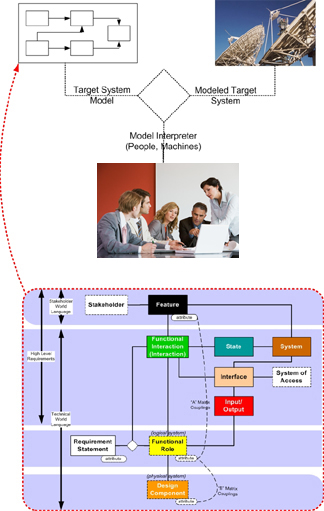Model-Based system descriptions (requirements, designs) are more explicit, less ambiguous than traditional prose:
- Reduced ambiguity lowers rework, cycle time, misunderstandings caused by interpretation issues;
- Reduce this universal experience: Three people reading a document have three interpretations of its content;
- This impacts those who plan, manage, analyze, design, create test plans for, and support these systems.
Easier to measure completeness and consistency of Models than prose:
- Document size, detail are not reliable indicators of completeness, consistency of requirements;
- Facilitating objective metrics;
- Improving risk management.
Easier to generate or review other artifacts consistent with the models:
- System plans, needs, requests, authorizations, requirements, designs, analyses;
- Generate improved FMECA framework from underlying model - more complete, systematic, and less effort to generate;
- Easier to measure, analyze, and maintain the consistency of different document views: different sub-systems, ICDs, test plans, requirements, designs.
The minimum information necessary to describe a Complex system.


